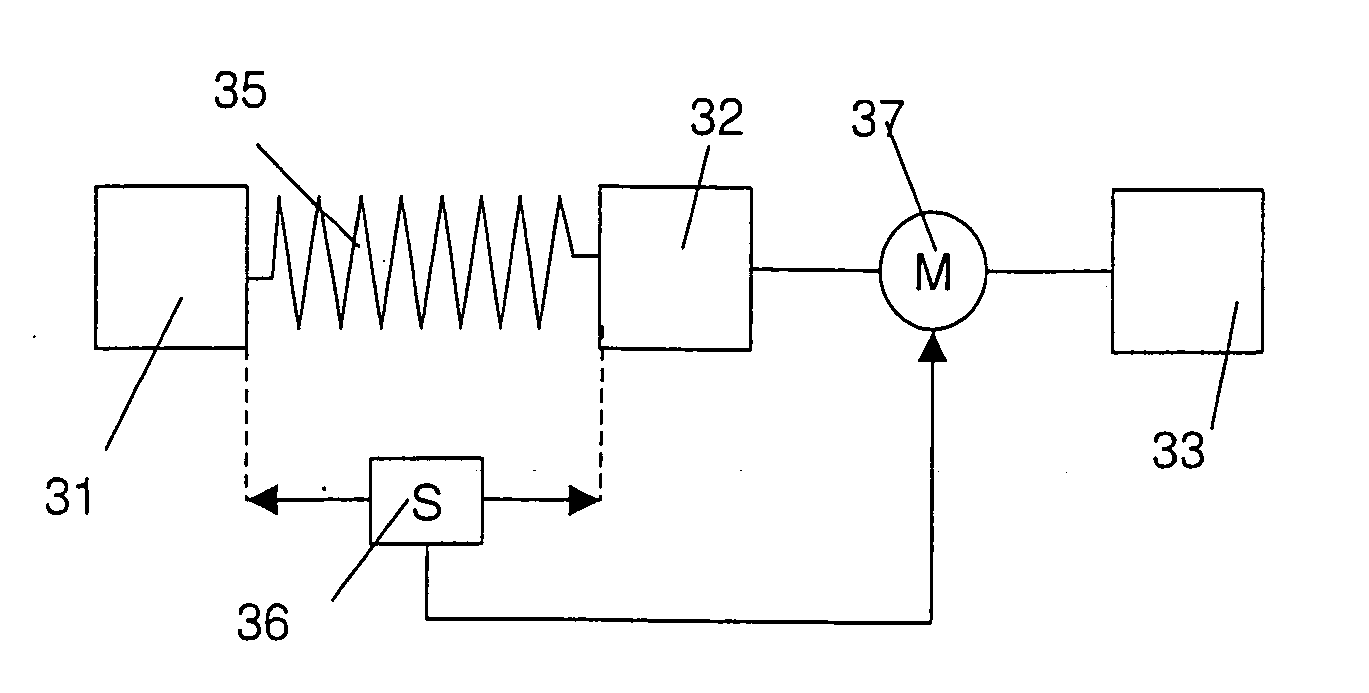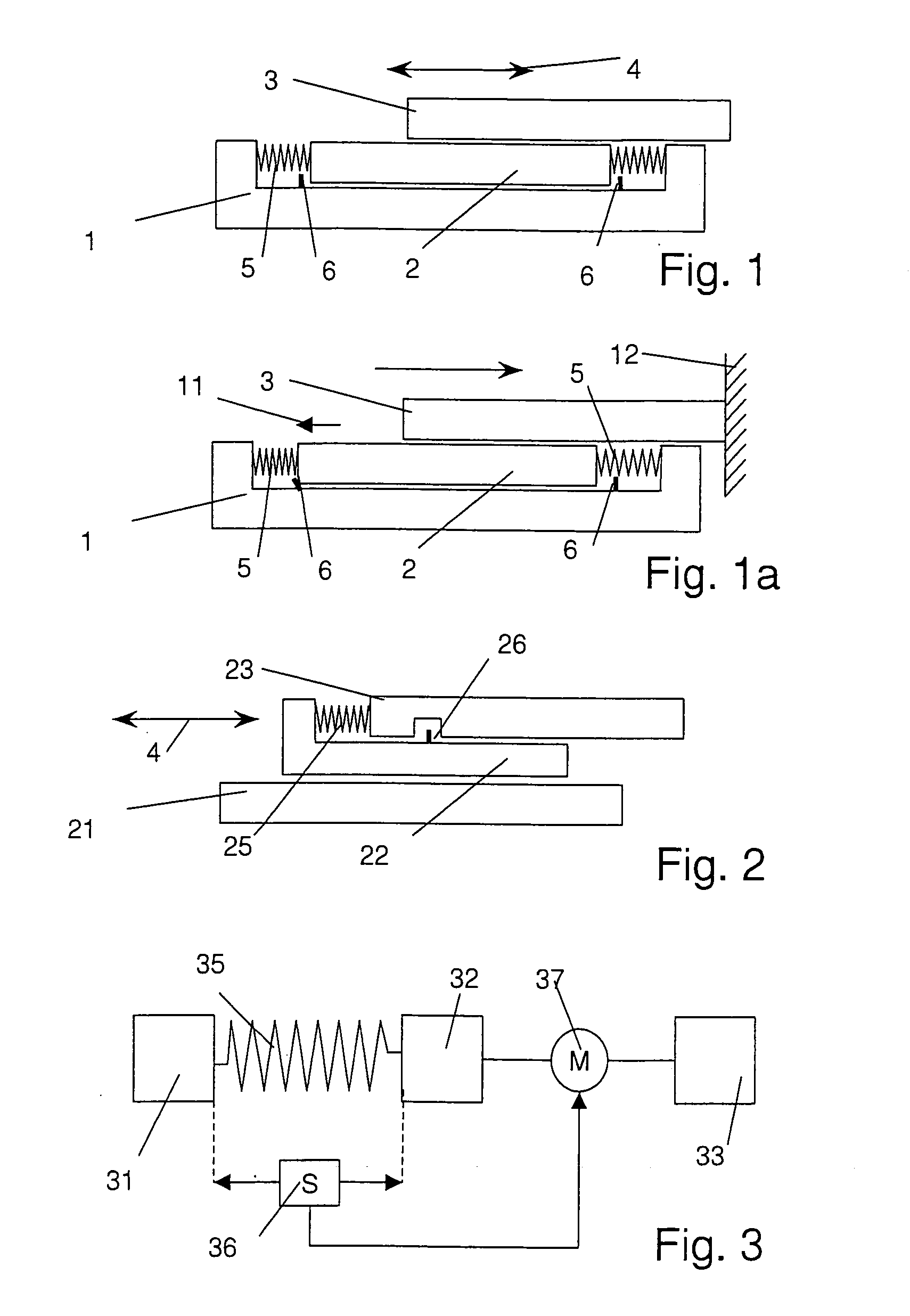Locking device
a technology of locking device and lock, which is applied in the direction of building locks, non-mechanical controls, interlocking clutches, etc., can solve the problems of affecting the operation of the safe, complicated electronics, and the inability to prevent a certain damage or at least increase the wear of the drive, so as to achieve a simple and reliable mechanism
- Summary
- Abstract
- Description
- Claims
- Application Information
AI Technical Summary
Benefits of technology
Problems solved by technology
Method used
Image
Examples
first embodiment
[0044]FIG. 1 depicts a very schematic picture of a locking device according to the invention. The locking device comprises a base 1 which may for example be fastened to a door or to a frame of a door. An intermediate element 2, namely a slide 2, is mounted on the base in a manner that it is movable relative thereto. This may for example be achieved by a slide contact bearing (not shown) arranged between base and slide. On the intermediate element, a locking means 3, namely a bolt is arranged. The bolt is movable relative to the slide by an electrical drive, as indicated by an arrow 4 in the figure. The slide 2 is kept in an equilibrium position—or central position—by at least one spring 5 (two springs in the shown embodiment). It may be moved—at least to some extent—against the force of the springs 5. The locking device further comprises switches 6, which are actuated by a movement of the slide 2 relative to the base 1 out of the equilibrium position. The switches serve as sensing m...
second embodiment
[0047] the invention is very schematically shown in FIG. 2. This embodiment relies on a similar principle. However, in this embodiment, the drive moves the slide 22 relative to the base 21. The bolt 23 is mounted to the slide and moveable relative thereto against the force of a spring 25. When the locking device is activated, the slide with the bolt is moved between the locking position and the release position by the electrical drive. As soon as the bolt is stopped—either by a stop or because it is blocked in an irregular position—the bolt is caused to move relative to the slide against the force of the spring, and the switch 26 is actuated to halt the drive.
[0048]FIG. 2 also illustrates how the functionality of the two switches 6 of FIG. 1 may be implemented by a single switch. It is assumed that the switching states of the switch 26 differ dependent on which direction the switch is moved to. Also, in FIG. 2 only one spring is present, the relaxed state of the spring defining the ...
PUM
 Login to View More
Login to View More Abstract
Description
Claims
Application Information
 Login to View More
Login to View More - R&D
- Intellectual Property
- Life Sciences
- Materials
- Tech Scout
- Unparalleled Data Quality
- Higher Quality Content
- 60% Fewer Hallucinations
Browse by: Latest US Patents, China's latest patents, Technical Efficacy Thesaurus, Application Domain, Technology Topic, Popular Technical Reports.
© 2025 PatSnap. All rights reserved.Legal|Privacy policy|Modern Slavery Act Transparency Statement|Sitemap|About US| Contact US: help@patsnap.com



